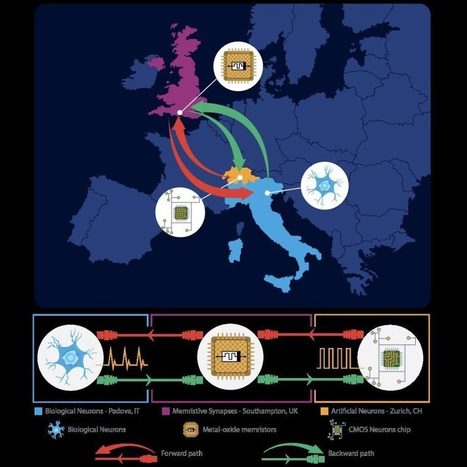As advanced as supercomputers get, the human brain still utterly leaves them in the dust. It’s made up of neurons that communicate with each other through pulses of electrical signals, passed across tiny gaps known as synapses. These neurons can both process and store information, unlike computers that require separate types of memory for each task.
Artificial versions of neurons and synapses have shown to be far more powerful than traditional computer chip designs, but they’re still in the experimental stage. And now, a team of researchers has taken the next step and connected the artificial and biological versions between three different countries.
Biological rat neurons were grown in a lab in Italy, at the University of Padova. Meanwhile, artificial neurons were made on silicon chips in Switzerland, at the University of Zurich and ETH Zurich. And these two different technologies communicated through artificial synapses, known as “memristors,” operated at the University of Southampton in the UK.
Spiking events were produced by the rat neurons and traveled over the internet to the memristors. These translated the signals into electronic spikes, then passed them onto the artificial neurons in Zurich. The system also worked just as well the other way around, allowing the biological and artificial components to quickly communicate in both directions.
“We are very excited with this new development,” says Themis Prodromakis, corresponding author of the study. “On one side it sets the basis for a novel scenario that was never encountered during natural evolution, where biological and artificial neurons are linked together and communicate across global networks; laying the foundations for the Internet of Neuro-electronics. On the other hand, it brings new prospects to neuroprosthetic technologies, paving the way towards research into replacing dysfunctional parts of the brain with AI chips.”
The research was published in the journal Scientific Reports.
Source: University of Southampton



 Your new post is loading...
Your new post is loading...







